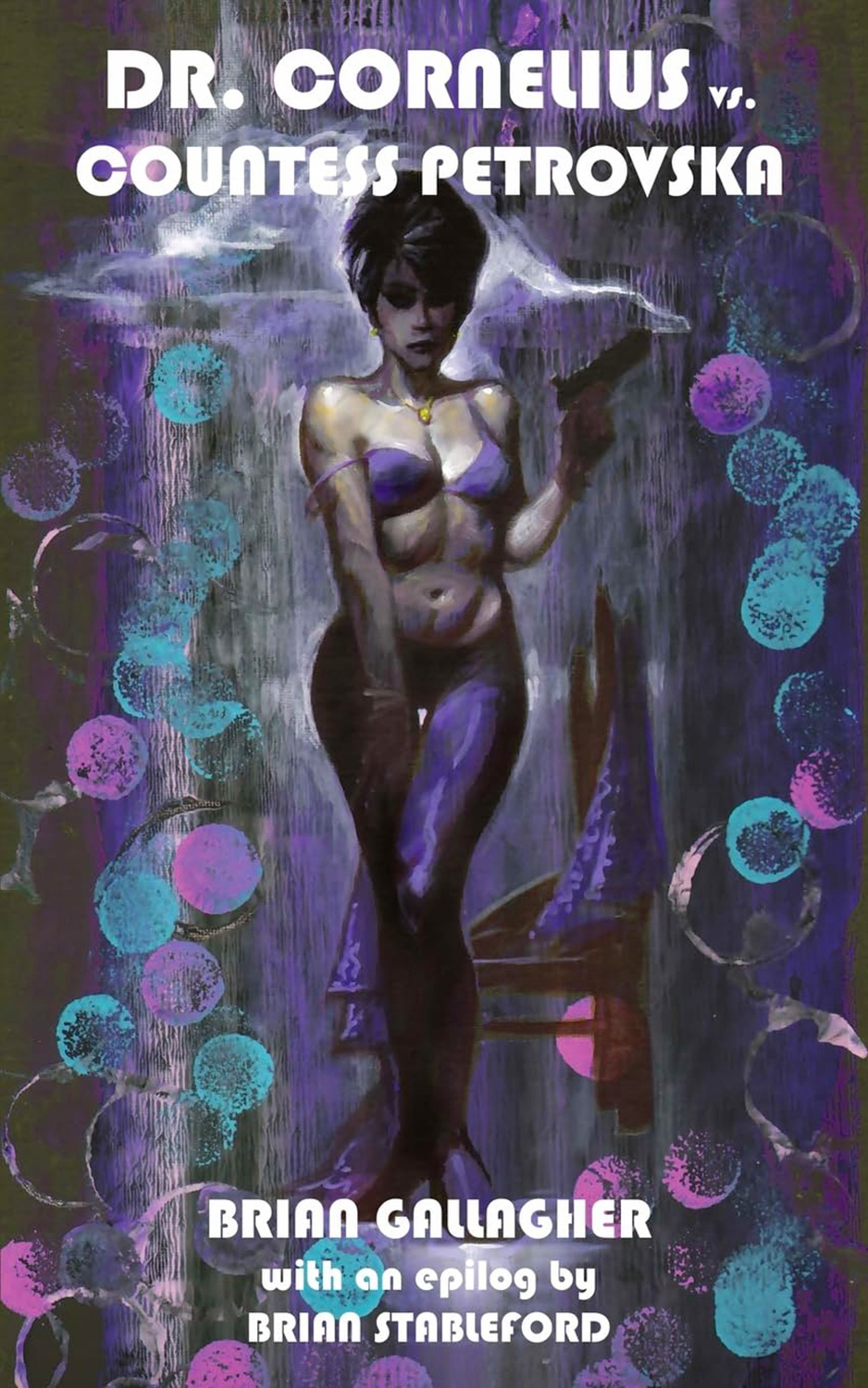 He is a brilliant surgeon, nicknamed the “Sculptor of Human Flesh” because of his diabolical ability to alter people’s likenesses. He starred in a 1913 series by Gustave Le Rouge that ran 18 volumes. This has been adapted by Brian Stableford and collected into three volumes by Black Coat Press.
He is a brilliant surgeon, nicknamed the “Sculptor of Human Flesh” because of his diabolical ability to alter people’s likenesses. He starred in a 1913 series by Gustave Le Rouge that ran 18 volumes. This has been adapted by Brian Stableford and collected into three volumes by Black Coat Press.
But his ultimate fate was left uncertain in the series. However, Brian Gallagher reviewed how he escaped justice in a series of stories that ran in Tales of the Shadowmen from vols. 17 through 20. This series, plus a new story, are collected in Dr. Cornelius vs. Countess Petrovska, along with a new foreword and afterward, and an epilogue by Stableford.
Set from the beginning of WWI, the Great Powers of Europe are all eager to use the services of the infamous Sculptor of Flesh to their advantage. Surprisingly, Dr. Cornelius will be assisted by an old foe partway through the series. He will need all the help he can get as he is opposed by Countess Irina Petrovska, a Polish patriot and loyal agent of the Habsburg Empire. She is actually a character from the movie The Horror Express. This series takes our characters across Europe and also pulls in alien artifacts and super-weapons.
There is a good forward that gives the background on this series, so if you haven’t read it, like me, it will help bring you up to speed.
In “The Doctor of Sarajevo” (Tales #17), our story kicks off with the assassination of Archduke Ferdinand that started WWI. Soon Dr. Cornelius is contacted by British intelligence to obtain a certain item from the Austrians. What is it, and will he succeed? The Countess, with her powerful car, is tapped as an agent of the Central Powers to stop him.
Next in “The Telepath of Galicia” (Tales #18), we find the Doctor now working for the Russians. He is paired with a Russian agent who takes a drug that gives him telepathy, though the Doctor is not aware of it. They are trying to thwart the attempt to re-establish Poland from German and Russian territories, among others. This is a major goal of the Countess. But others are aware the Doctor is in Krakow. Who will succeed?
Then in “The Deadly Projector Over Split” (originally titled “The Projector of Death” from Tales #19), the Doctor is given the mission to obtain the titular “projector.” The device is a mysterious one — maybe from Saturn? — in the possession of an Italian who wants to use it against Austrio-Hungary. But the French and others don’t agree, wanting to use it on the Western Front. So send Dr. Cornelius after it. He decides to recruit his former foe, Lord Burydan (from the original series), who has been scarred by fire, by offering to restore his face and body if they are successful. They are, but is this a new chapter for Dr. Cornelius as Lord Burydan is willing to work with him?
Our next story, “The Prisoner of Budapest,” is new to this collection. A French scientist captured by the Germans is working for the Austrians in Budapest. Using alien technology, he has worked out how to duplicate people. This may turn the tide of the war. The allies want him returned or killed. The Austrians want him protected. Thus Dr. Cornelius is sent to handle this. He brings along Lord Burydan. To make it easier they steal a flying saucer in the possession of the Swiss (I would have been interested in learning the literary basis for this). The Austrio-Hungary Emperor sends the Countess to oversee the scientist and ensure his safety. So who will succeed?
And in our final story, “The Secret Archive of Vienna” (Tales #20), we now find Dr. Cornelius is working for U.S. military intelligence to grab the secret archives of extraterrestrial info before other nations get it as the Austro-Hungary Empire collapses at the end of the war. Does he succeed?
Brian Stapleford’s epilogue is titled “Malbrough s’en va-t-en guerre” and gives a hint of what may happen with Dr. Cornelius.
The afterword by Brian Gallagher should be read after everything else. It not only tells how this series came about but delves into the details of each of the stories and where the story elements came from. This is good as they left out the usual character/location citations that appeared at the end of Tales of the Shadowmen. Plus as the epilogue gives a hint about Dr. Cornelius’ future, the afterward gives some hints for the Countess.
Overall I thought this was a great collection, and there was enough new stuff that this was worth getting even after reading it all in Tales.




FWIW, Brian Stableford’s epilogue was classified by Brian as a short story and first appeared, long before the Gallagher stories, in Tales #10 – see http://www.philsp.com/stableford/shorts/ms.htm#Malbrough